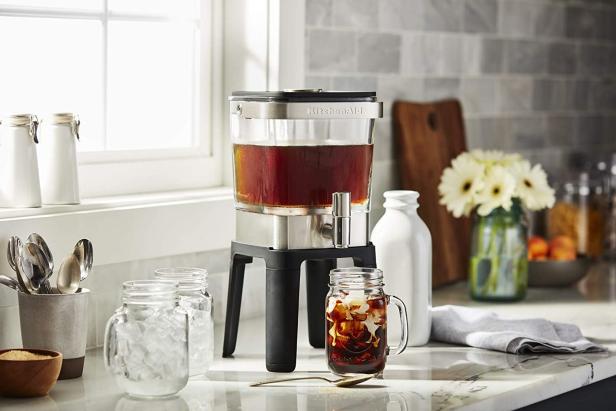9 Best Flowers for a Stunning Garden: Tips for Growing Roses, Tulips, Lavender, and More
Flowers have a unique way of brightening up any space and lifting your spirits. Whether you’re looking to enhance your garden, add a splash of color to your home, or find the perfect bouquet for a special occasion, knowing the best flowers to choose can make all the difference.
In this article, we’ll explore the nine best flowers that are not only visually stunning but also easy to care for and versatile for various uses. From classic roses to exotic orchids, these flowers will captivate your senses and transform any environment into a vibrant, welcoming space.
1. Roses: The Classic Beauty
Roses are the quintessential symbol of love and elegance, perfect for any setting or occasion.
Varieties of Roses
Explore a wide range of rose varieties to suit any garden or decor. Hybrid Tea Roses are renowned for their large, showy blooms and strong fragrance. Floribunda Roses produce clusters of flowers, ideal for adding masses of color. Climbing Roses can adorn trellises or walls with their cascading blossoms. Miniature Roses are perfect for small spaces or container gardening. Grandiflora Roses combine size and floriferousness, making a dramatic statement in any garden.
Care Tips for Roses
Ensure optimal growth and health with proper care. Plant your roses in well-draining soil with plenty of organic matter. Prune regularly to remove dead or diseased wood and encourage new growth. Water deeply but infrequently, allowing the soil to dry slightly between waterings. Fertilize monthly during the growing season with a balanced rose fertilizer. Protect against pests and diseases with regular inspections and organic treatments if necessary.
2. Tulips: Vibrant and Graceful
Tulips add an elegant touch to any garden or home décor with their stunning colors and shapes. They’re versatile and easy to care for, making them a favorite among gardeners.
Types of Tulips
Single Early Tulips: These bloom early in spring and have sturdy stems. Colors range from soft pastels to vivid hues.
Double Late Tulips: Known for their peony-like blossoms, these tulips are perfect for creating lush garden displays.
Fringed Tulips: Featuring fringed petal edges, they are visually striking and add texture to bouquets.
Parrot Tulips: With ruffled petals and vibrant patterns, these tulips make dramatic statements in arrangements.
Darwin Hybrid Tulips: Tall and strong, they produce large blooms, ideal for cutting gardens and borders.
Planting and Maintenance Tips
Choose Well-Drained Soil: Tulips thrive in well-drained soil. Mix sand or organic matter to improve drainage.
Plant Deeply: Plant tulip bulbs 6-8 inches deep to protect them from harsh winter conditions.
Water Sparingly: Tulips do not need much water. Water the bulbs after planting, then only during dry spells.
Fertilize Annually: Use a balanced fertilizer in early spring when shoots appear to boost growth.
Protect from Pests: Keep an eye out for pests like aphids. Use insecticidal soap as needed to maintain plant health.
3. Orchids: Exotic and Majestic
Orchids are admired for their exotic beauty and diverse appearances. Their elegance makes them a sought-after addition to homes and gardens.
Popular Orchid Species
- Phalaenopsis (Moth Orchid): Known for its large, flat petals, the Phalaenopsis blooms for several months. It’s perfect for beginners due to its easy care.
- Cattleya: Often referred to as the “Queen of Orchids,” Cattleyas are renowned for their large, fragrant blooms, commonly seen in corsages.
- Dendrobium: These orchids have delicate flowers growing in clusters. Dendrobiums thrive in bright, indirect sunlight and cooler temperatures.
- Vanda: With its vibrant, multi-colored flowers, Vanda Orchids are stunning. They require ample light and humidity to flourish.
- Oncidium (Dancing Lady): Named for its flowers that resemble ballerinas, Oncidium produces abundant blooms and needs frequent watering.
- Lighting: Provide bright, indirect sunlight. East or west-facing windows are ideal for most orchid species.
- Watering: Water orchids thoroughly but allow the medium to dry out between waterings. Overwatering can lead to root rot.
- Humidity: Maintain a humidity level of 50-70%. Use a humidifier or place the orchid on a humidity tray if necessary.
- Temperature: Orchids generally prefer temperatures between 60-80°F. Avoid placing them in drafty areas or near heating vents.
- Fertilization: Use a balanced fertilizer every two weeks during the growing season. Reduce feeding during the dormancy period.
- Repotting: Repot orchids every 1-2 years, preferably after they’ve finished blooming. Use a specialized orchid potting mix for best results.
Incorporating orchids into your living space adds a touch of exotic elegance. By following these care guidelines, you can enjoy their stunning blooms for years.
4. Sunflowers: Bright and Cheerful
Sunflowers epitomize joy with their vibrant yellow petals and towering stalks. Cultivate your garden’s cheerfulness with these radiant flowers.
Different Sunflower Varieties
Explore the diverse world of sunflowers to find the perfect fit for your garden.
- Mammoth Sunflower: Known for its towering height and large blooms, it’s a classic choice for large spaces.
- Autumn Beauty: Offers a range of colors from golden yellow to deep red, adding a burst of fall-like hues.
- Teddy Bear Sunflower: Compact and fluffy, perfect for containers or smaller garden beds.
- Italian White: Unique with its creamy petals, it stands out among traditional yellow varieties.
- Velvet Queen: Exhibits rich, dark red petals, giving an elegant contrast to more common types.
Growing Sunflowers Successfully
Ensure your sunflowers thrive with these simple tips.
- Choose the Right Location: Pick a spot with full sun exposure, as sunflowers need at least 6-8 hours of direct sunlight daily.
- Soil Preparation: Ensure well-draining soil, enriched with compost. Sunflowers prefer slightly acidic to neutral pH levels.
- Planting Seeds: Sow seeds directly into the ground after the last frost, spacing them 12-18 inches apart.
- Watering: Provide consistent moisture, especially during germination, but avoid waterlogging.
- Staking: Tall varieties may need staking to prevent wind damage; use sturdy supports.
- Pest Control: Protect against common pests like aphids and birds using natural repellents or netting.
By selecting the right varieties and following these guidelines, you’ll enjoy a garden filled with bright, cheerful sunflowers all season long.
5. Lilies: Elegant and Fragrant
Lilies add a touch of elegance and a delightful fragrance to any garden. Their vibrant colors and intricate blooms make them a favorite among gardeners.
Common Types of Lilies
- Asiatic Lilies:
Perfect for beginners, Asiatic lilies are easy to grow and come in various colors like orange, red, and yellow. These lilies bloom in early to mid-summer and are known for their upward-facing petals. - Oriental Lilies:
These lilies are celebrated for their large, fragrant blooms. They usually bloom in mid to late summer and feature bright colors like pink, white, and red. Oriental lilies often have spotted and ruffled petals. - Trumpet Lilies:
Renowned for their trumpet-shaped flowers, these lilies emit a strong fragrance. They bloom in midsummer and display colors like white, yellow, and pink. Trumpet lilies can grow quite tall, often reaching heights of up to 6 feet. - Martagon Lilies:
Also known as Turk’s Cap lilies, Martagon lilies have unique, downward-facing flowers. They bloom in early summer and are typically found in shades of pink, orange, and maroon. - LA Hybrid Lilies:
These hybrids combine the best traits of Asiatic and Longiflorum lilies. They offer large, fragrant blooms and vibrant colors, ranging from white to yellow, pink, and red.
- Planting:
Choose a well-drained, sunny location for planting lilies. Plant bulbs about 6-8 inches deep in the soil. Ensure the pointed side of the bulb faces up. - Watering:
Water lilies regularly but avoid waterlogging. It’s crucial to keep the soil moist, especially during dry spells. Mulching can help retain moisture. - Fertilizing:
Use a balanced fertilizer in early spring. Feed the lilies again just before blooming to promote healthy growth. - Staking:
Stake tall varieties like Trumpet lilies to prevent them from toppling over. Use bamboo stakes and tie the stems loosely to provide support. - Pest Control:
Watch out for pests like aphids and lily beetles. Use insecticidal soap or neem oil to keep these pests at bay. Regularly inspect your plants for any signs of infestation. - Deadheading:
Remove spent flowers to encourage more blooms and prevent seed formation. This practice helps the plant conserve energy.
By selecting the right types of lilies and providing proper care, your garden will flourish with elegant and fragrant blooms, adding beauty and charm throughout the growing season.
6. Daisies: Simple yet Striking
Daisies bring a cheerful simplicity to any garden. Their bright, sunny faces are sure to lift your spirits.
Daisy Varieties Worth Growing
Consider growing Shasta daisies, which are known for their large, white petals and yellow centers. Gerbera daisies come in various vibrant colors, adding a pop of color to your garden. Ox-eye daisies, with their resilient nature, are perfect for less-maintained areas.
Daisies Growing Tips
Choose a spot that gets full sun for best results. Water daisies moderately—too much water can lead to root rot. Deadhead spent flowers to encourage continuous blooming. Ensure good drainage to keep plants healthy. Use a balanced fertilizer once a month during the growing season. Keep an eye out for aphids and treat as necessary with insecticidal soap.
7. Poppies: Delicate and Bold
Poppies bring a unique blend of delicacy and bold color to any garden. Known for their vibrant petals and ease of care, they are a favorite among gardeners.
Types of Poppies
Explore the variety within the poppy family:
- Oriental Poppies: Known for their large, vivid flowers. Colors range from red to pink to white. These perennials thrive in sunny locations.
- Iceland Poppies: Bloom from late spring to early summer. They produce delicate, papery flowers in shades of yellow, orange, red, and white.
- California Poppies: Annuals with bright orange flowers. Perfect for adding a splash of color to border gardens and meadows.
- Himalayan Blue Poppies: Rare and visually striking. These perennials need cool, moist conditions and partial shade to thrive.
Growing and Caring for Poppies
Follow these tips to grow healthy poppies:
- Planting Location: Choose a sunny spot with well-draining soil. Poppies don’t like wet roots.
- Sowing Seeds: Sow seeds directly into the soil in early spring or fall. Scatter seeds and lightly press them into the soil without covering.
- Watering: Water seedlings regularly until established. Mature plants need moderate watering.
- Fertilizing: Use a balanced fertilizer in the spring. Avoid high nitrogen content, as it promotes foliage over flowers.
- Deadheading: Remove spent flowers to encourage more blooms. This also prevents self-seeding if you want to control spreading.
- Pest Control: Watch for aphids, caterpillars, and powdery mildew. Use insecticidal soap for aphids and neem oil for mildew.
By incorporating these practices, you’ll enjoy the beauty and resilience of poppies in your garden all season long.
8. Lavender: Soothing and Aromatic
Lavender is a versatile flower known for its calming scent and beautiful purple blooms. It’s perfect for adding color and fragrance to your garden.
Lavender Variants
Numerous varieties of lavender can fit different garden settings. English Lavender (Lavandula angustifolia) is popular for its sweet aroma and essential oil production. French Lavender (Lavandula dentata) has fringed petals and a slightly less pungent scent. Spanish Lavender (Lavandula stoechas) boasts unique flower shapes with colorful bracts atop each spike. Lavandin (Lavandula x intermedia) is a hybrid known for its strong scent and robust growth. Choose the variant that best suits your climate and aesthetic preferences.
Tips for Growing Lavender
Plant lavender in well-draining soil since it doesn’t tolerate excess moisture. Pick a sunny spot that gets at least six hours of direct sunlight daily. Water sparingly once established; overwatering can lead to root rot. Prune in the late summer to shape the plant and encourage new growth. Avoid heavy fertilization as too much nitrogen can reduce flowering. Protect lavender from harsh winter conditions by mulching in colder climates. By following these tips, you’ll enjoy healthy, aromatic lavender blooms year after year.
9. Peonies: Lush and Romantic
Peonies are adored for their lush, romantic blooms that add a touch of elegance to any garden. They’re a favorite among many garden enthusiasts.
Exploring Different Peony Types
Discover three main types of peonies: herbaceous, tree, and intersectional. Herbaceous peonies die back to the ground in winter, while tree peonies maintain woody stems year-round. Intersectional peonies, also known as Itoh peonies, are hybrids combining the best of both. These types offer diverse forms and colors, from soft pastels to vibrant reds.
How to Care for Peonies
Plant peonies in well-draining soil and select a spot with full sun to partial shade. Water them deeply but infrequently, letting the soil dry out between waterings. Apply mulch to retain moisture and keep roots cool. Fertilize in early spring, avoiding high-nitrogen formulas to prevent excessive foliage growth. Support blooms with rings or stakes to keep them upright. Prune in fall and protect from harsh winters by adding a layer of mulch. Following these care tips ensures your peonies thrive and delight with their stunning blooms year after year.
Conclusion: Incorporating the 9 Best Flowers in Your Garden
By choosing from these nine best flowers, you can create a stunning and diverse garden that offers beauty and fragrance throughout the year. Each flower has its unique charm and specific care requirements, but with the right knowledge and a bit of effort, you’ll enjoy lush blooms and vibrant colors.
Remember to consider your local climate and soil conditions when planning your garden. With proper care and attention, your garden will thrive, providing a delightful sanctuary for you and a haven for pollinators. Happy gardening!






